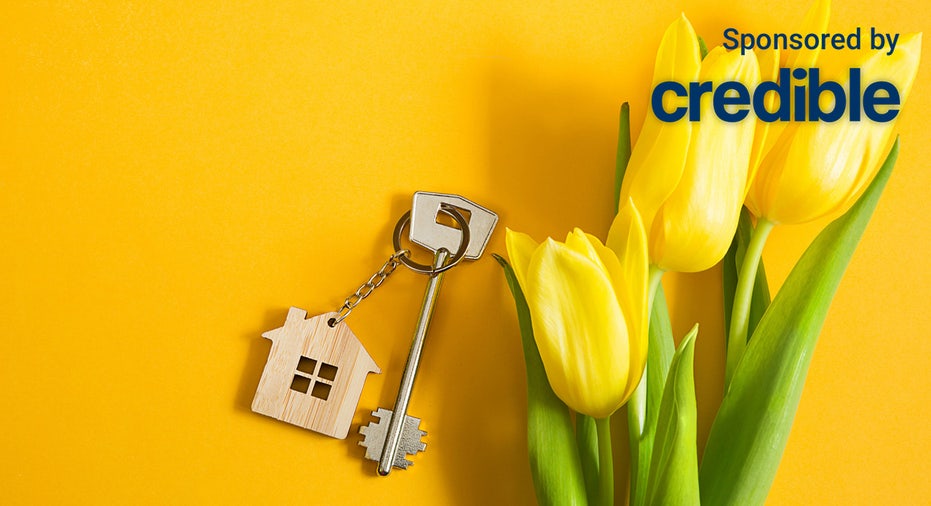Sellers can get $7,700 more, on average, than the original listing price if they list in the spring. (iStock)
Homeowners looking to sell this year may want to wait until June to list, when sellers tend to make the most. In 2023, homes listed in June sold for 2.3% more, according to a Zillow analysis. This equals an additional $7,700, on average, to the median sale price. Before the pandemic, May used to be the best month to list, according to Zillow. But, since 2019, June is more profitable.
“The old logic was that sellers could earn a premium by listing in late spring when their home would be on the top of the pile of listings when search activity was at its peak. Now, with persistently low inventory, mortgage rate fluctuations make their own seasonality,” Skylar Olsen, Zillow chief economist, said.
Location impacts the exact month that’s best for sellers to list. In San Francisco, the best time to list is the second half of February, but in New York and Philadelphia, the first half of July brings higher home prices.
The table below shows 10 of the major real estate markets and when the best home listing time is within those markets:
|
Location
|
Best Time to List
|
Price Premium
|
Profit Boost
|
|
New York, NY
|
First half of July
|
2.4 %
|
$15,500
|
|
Los Angeles, CA
|
First half of May
|
4.1 %
|
$39,300
|
|
Chicago, IL
|
First half of June
|
2.8 %
|
$8,800
|
|
Dallas, TX
|
First half of June
|
2.5 %
|
$9,200
|
|
Houston, TX
|
Second half of April
|
2.0 %
|
$6,200
|
|
Washington, DC
|
Second half of June
|
2.2 %
|
$12,700
|
|
Philadelphia, PA
|
First half of July
|
2.4 %
|
$8,200
|
|
Miami, FL
|
First half of June
|
2.3 %
|
$12,900
|
|
Atlanta, GA
|
Second half of June
|
2.3 %
|
$8,700
|
|
Boston, MA
|
Second half of May
|
3.5 %
|
$23,600
|
This year in particular may be an interesting year as buyers wait to see if the Federal Reserve will drop interest rates.
“First-time home buyers who are on the edge of qualifying for a home loan may dip in and out of the market, depending on what’s happening with rates. It is almost certain the Federal Reserve will push back any interest-rate cuts to mid-2024 at the earliest. If mortgage rates follow, that could bring another surge of buyers later this year,” Olsen said.
If you think you’re ready to shop around for a home loan, consider using Credible to help you easily compare interest rates from multiple lenders in minutes.
HOMEBUYERS GAINED THOUSANDS OF DOLLARS AS MORTGAGE INTEREST RATES FALL: REDFIN
Home affordability remains a hurdle for prospective homebuyers
While sellers make out well in the spring buying rush, homebuyers face record-high home prices and bidding wars.
In a recent congressional hearing, Dr. Jessica Lautz, the deputy chief economist and vice president of research at the National Association of REALTORS®, laid out the current conditions of the housing market. She explained that the annual number of home sales for existing homes is the lowest it’s been since 1995.
Buyers aren’t buying for numerous reasons. Lautz cited more frequent bidding wars and a lack of inventory on the market. As of January, the average seller receives 2.7 offers. Plus, 16% of homes that did sell were over the list price.
“First-time home buyers continue to struggle to enter the housing market lacking the housing equity that boosts the purchasing power of repeat buyers,” Lautz said. “First-time buyers accounted for 32% of primary-residence buyers last year, which remains well under the historical norm of 40%. While there is a smaller share of first-time buyers, they are also older than they have been historically.”
In the 1980s, the typical first-time buyer was in their late 20s; however, they are now in their mid 30s,” Lautz continued.
She further explained that the average first-time buyer that successfully bought a home had an income that was about $25,000 higher than those who bought last year. This creates a divide in wealth between homeowners and renters.
“The wealth held by homeowners is 40 times that of a renter,” according to Lautz. “Housing wealth can be used to help children attend college, pay for remodeling costs on the home, in retirement or even help their own children achieve the dream of homeownership.”
If you’re looking to purchase a home in today’s market, you can explore your mortgage options by visiting Credible to compare rates and lenders and get a mortgage preapproval letter in minutes.
HOMEBUYERS CONSIDERING PURCHASING TINY HOMES AND FIXER-UPPERS TO COMBAT HIGH HOME PRICES
Certain states continue to face high homeowners insurance rates
Adding to the cost of homeownership, homeowner insurance rates are increasing throughout the entire country. For a $300,000 property, homeowners insurance rose by 12% in 2023 and now averages $1,770 annually, according to Insurify data.
Certain states are getting the brunt of rising rates. Florida remains the state most affected by rate hikes, with homeowners now paying $9,213 annually, on average. Additionally, some California residents who use State Farm will have their policies pulled altogether, the company announced. About 30,000 homeowners policies, rental policies and other property insurance policies won’t be renewed.
“This decision was not made lightly and only after careful analysis of State Farm General’s financial health, which continues to be impacted by inflation, catastrophe exposure, reinsurance costs, and the limitations of working within decades-old insurance regulations,” the release said.
The non-renewals will happen on a rolling basis over the course of the next year. Beginning July 3, homeowners and renters, as well as businesses with property coverage won’t be able to seek renewal.
While homeowners insurance may be high, you can try to lower your housing costs by shopping around for low mortgage rates. Credible lets you view multiple mortgage lenders and provide you with personalized rates, all without impacting your credit.
NORTH CAROLINA’S INSURANCE RATES HIKE DENIED, RATES IN OTHER STATES STILL RISING
Have a finance-related question, but don’t know who to ask? Email The Credible Money Expert at [email protected] and your question might be answered by Credible in our Money Expert column.

 Economics1 week ago
Economics1 week ago
 Economics1 week ago
Economics1 week ago
 Economics6 days ago
Economics6 days ago
 Finance1 week ago
Finance1 week ago
 Blog Post7 days ago
Blog Post7 days ago
 Economics1 week ago
Economics1 week ago
 Personal Finance6 days ago
Personal Finance6 days ago
 Economics1 week ago
Economics1 week ago












